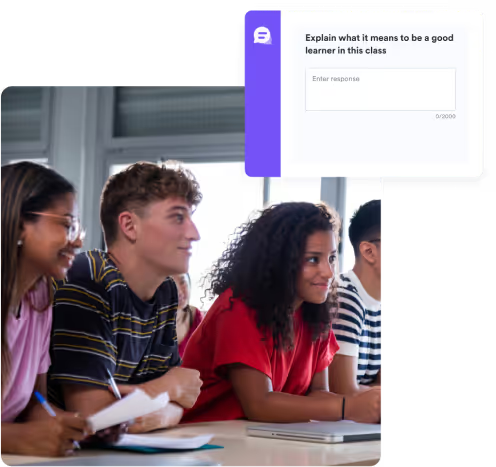Students can use Ziplet without an account – Learn more

Who was the antagonist and what were their motivations?
What is the capital of x?
Explain photosynthesis in simple terms.
What process does this image show?


What’s one change we could make to the way we learn in this class?
What’s one thing you’d like me to start doing in class?
What’s one thing you’d like me to stop doing in class?
How confident do you feel to voice your opinion in this class?
How can we be supportive classmates?
What's one thing you want to practice again?
What is something you learned from the group activity today?
What’s one change we could make to the way we learn in this class?
How well do you feel you understood today's lesson?
What is one thing you'd like me to explain more clearly?
What was the most important thing you learned in today's class? Why is it important?
How well did you work today on a scale of 1-7? Describe why you feel this way
How could the knowledge you learned today be used in the real world?
What's one thing you want to practice again?
What are you struggling to understand at the moment?


What's one thing outside of school that you love doing?
Did you have enough sleep last night?
How do you feel about your workload right now?
What helps you to get in a good mood when you're feeling down?
What makes you feel good about your life?
What makes you feel anxious?
Who do you turn to for support?